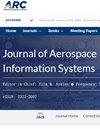展示复杂空间任务的自主性:欧罗巴着陆器任务自主性原型
IF 1.5
4区 工程技术
Q2 ENGINEERING, AEROSPACE
引用次数: 1
摘要
人们希望机器人航天器能够在未知的动态环境中进行探索。欧罗巴着陆器任务概念就是这样一个任务,它需要处理极其有限的寿命和能源供应,管理长时间停电的间歇性通信,面临无数的环境危险,最终要在远离地球的地方进行,无法依靠人类控制。迄今为止,还没有任何特派团像这次特派团那样具有所需的自主程度,并在通信限制、不确定性和任务概念复杂性的相同程度下运作。因此,在将其信任于关键任务规划之前,必须证明自治的可行性。在本文中,我们提出了一个自主软件原型,可以演示和测试不同的规划人员和执行人员在有限的人类干预下执行复杂的、以科学为中心的任务的能力。原型机使用了一种分层实用新型,用于最大化预期科学回报的数量以及地面强加的任务目标的数量。我们演示了该系统如何在模拟和实际硬件中处理复杂空间任务所期望的一些自主任务,如决策、原位数据采集和分析、数据优先级、资源管理和故障响应处理。通过几个基于场景的实验,我们展示了不同的规划者和执行者如何应对欧罗巴着陆器任务概念的挑战。我们还证明了该系统可以与硬件原型一起用于自主现场测试。本文章由计算机程序翻译,如有差异,请以英文原文为准。
Demonstrating Autonomy for Complex Space Missions: A Europa Lander Mission Autonomy Prototype
There is a desire for robotic spacecraft to perform exploration in unknown, dynamic environments. The Europa Lander Mission Concept is one such mission that needs to deal with an extremely limited lifetime and energy supply, manage intermittent communications with long blackouts, face numerous environmental dangers, and ultimately take place too far from Earth to rely on human control. No missions to date have operated with the required level of autonomy and under the same level of communication constraints, uncertainty, and mission concept complexity as this mission. As a result, the viability of the autonomy must be demonstrated before it will be trusted with mission-critical planning. In this paper, we present an autonomous software prototype that can demonstrate and test the ability of different planners and executives to carry out complex, science-centric missions with limited interventions from humans. The prototype uses a hierarchical utility model that is used to maximize both the amount of expected science return as well as the number of mission objectives imposed by the ground. We demonstrate how this system handles some of the autonomous tasks expected of complex space missions such as decision making, in-situ data acquisition and analysis, data prioritization, resource management, and failure response handling in both simulation and on actual hardware. Through several scenario-based experiments we show how different planners and executives can meet the challenges of the Europa Lander Mission Concept. We also demonstrate that this system can be used in concert with a hardware prototype for autonomy field tests.
求助全文
通过发布文献求助,成功后即可免费获取论文全文。
去求助
来源期刊

Journal of Aerospace Information Systems
ENGINEERING, AEROSPACE-
CiteScore
3.70
自引率
13.30%
发文量
58
审稿时长
>12 weeks
期刊介绍:
This Journal is devoted to the dissemination of original archival research papers describing new theoretical developments, novel applications, and case studies regarding advances in aerospace computing, information, and networks and communication systems that address aerospace-specific issues. Issues related to signal processing, electromagnetics, antenna theory, and the basic networking hardware transmission technologies of a network are not within the scope of this journal. Topics include aerospace systems and software engineering; verification and validation of embedded systems; the field known as ‘big data,’ data analytics, machine learning, and knowledge management for aerospace systems; human-automation interaction and systems health management for aerospace systems. Applications of autonomous systems, systems engineering principles, and safety and mission assurance are of particular interest. The Journal also features Technical Notes that discuss particular technical innovations or applications in the topics described above. Papers are also sought that rigorously review the results of recent research developments. In addition to original research papers and reviews, the journal publishes articles that review books, conferences, social media, and new educational modes applicable to the scope of the Journal.
 求助内容:
求助内容: 应助结果提醒方式:
应助结果提醒方式:


